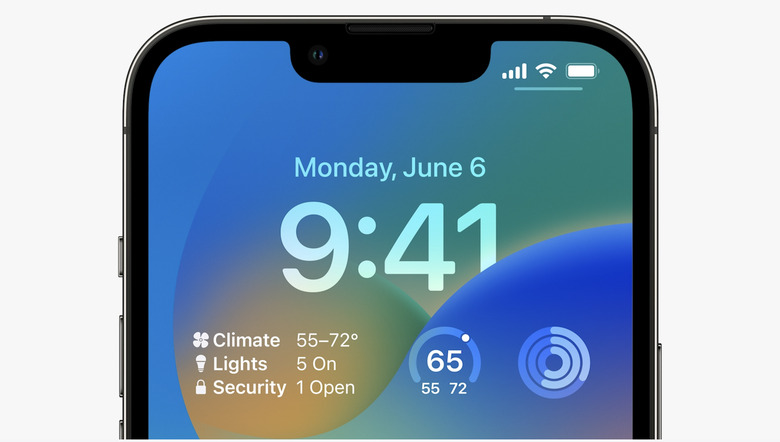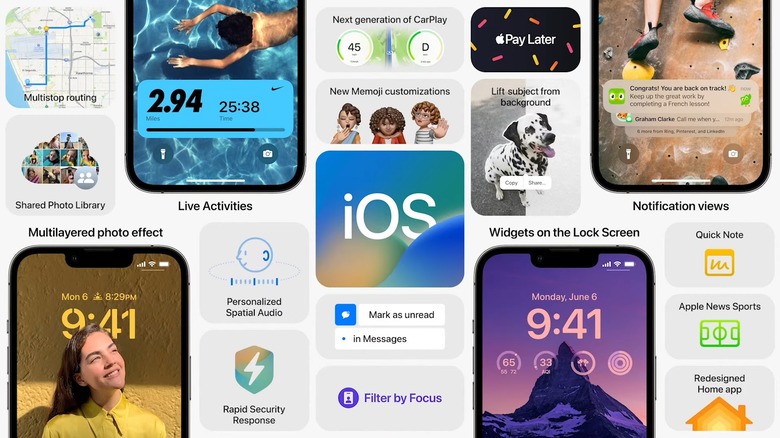iOS 16 Code Leaks Always-On Display For iPhone 14 Pro
Apple pulled back the curtain on iOS 16 during its WWDC 2022 keynote on Monday. As many reports revealed, iOS 16 brings significant changes to the lock screen, including widgets, live activities, multilayered photo effects, stylized date and time, and more. Apple stopped short of announcing an always-on display, but according to 9to5Mac, there are references to that exact technology in the code of the first iOS 16 developer beta.
iOS 16 beta reveals always-on display support
Shortly after Apple wrapped up its WWDC keynote address, the first iOS 16 beta rolled out to developers. After downloading the beta, 9to5Mac dug into the code to see what it could find. The site ended up discovering several references to always-on displays:
According to 9to5Mac, iOS 16 adds three new frameworks relating to backlight management of the iPhone's display. Backlight management ensures that content on the display is visible while the display consumes as little power as possible. These new frameworks each include references to always-on display support.
9to5Mac also appears to be rather confident that these always-on features have nothing to do with the always-on display of the Apple Watch:
All of the frameworks discovered by 9to5Mac are used by different components of iOS, including the Lock Screen. Additionally, and most notably, there are multiple references to an always-on display within the Springboard, which is what manages the Lock Screen (and home screen) of iPhone. Apple Watch does not use Springboard.
The site also found hidden flags in iOS 16 that Apple engineers can use to enable the always-on display on unsupported devices. This should allow those engineers to test the feature on the iPhone 13 Pro ahead of the launch of the iPhone 14 series this fall.
iPhone 14 Pro will unlock new features
We already knew that Apple was likely adding an always-on display to the iPhone 14 Pro and Pro Max. Bloomberg's Mark Gurman said in his newsletter late last month that "iOS 16 builds in future support for an always-on lock screen," which was once planned for iPhone 13. He also claimed that the feature would be exclusive to the Pro models.
As 9to5Mac explains, this exclusivity has to do with the refresh rate of the display. The display of the iPhone 13 Pro, for example, can scale from 10Hz to 120Hz. The Apple Watch can drop all the way down to 1Hz. Presumably, the variable refresh rate display will be exclusive to the Pro models again this year. As a result, the always-on display features will only be available on those models. That's also why Apple can test the features on iPhone 13 Pro.
In the meantime, you might want to figure out whether or not iOS 16 supports your iPhone. You can check the full list of supported devices on iOS 16 right here.
More iPhone coverage: For more iPhone news, visit our iPhone 14 guide.

